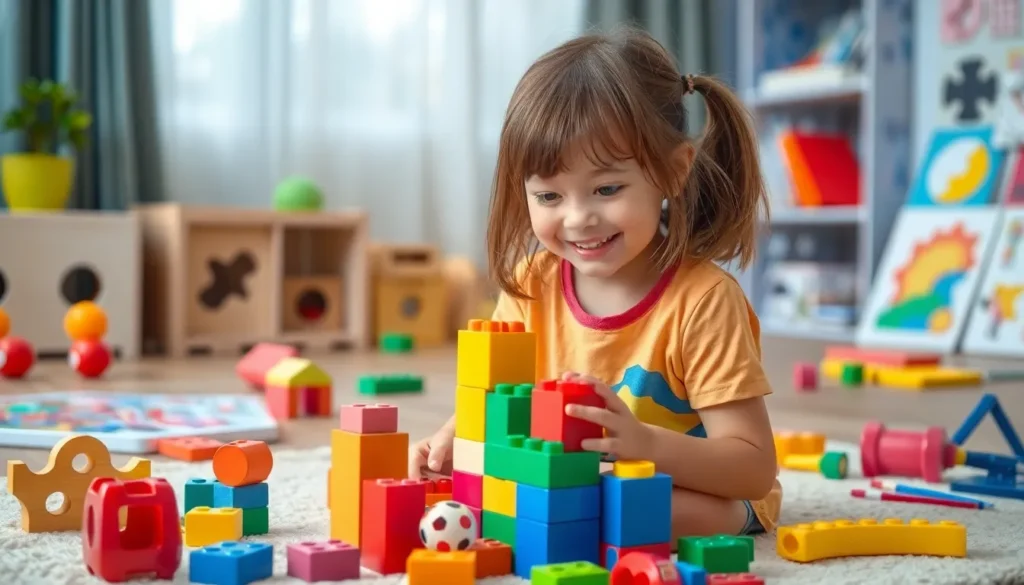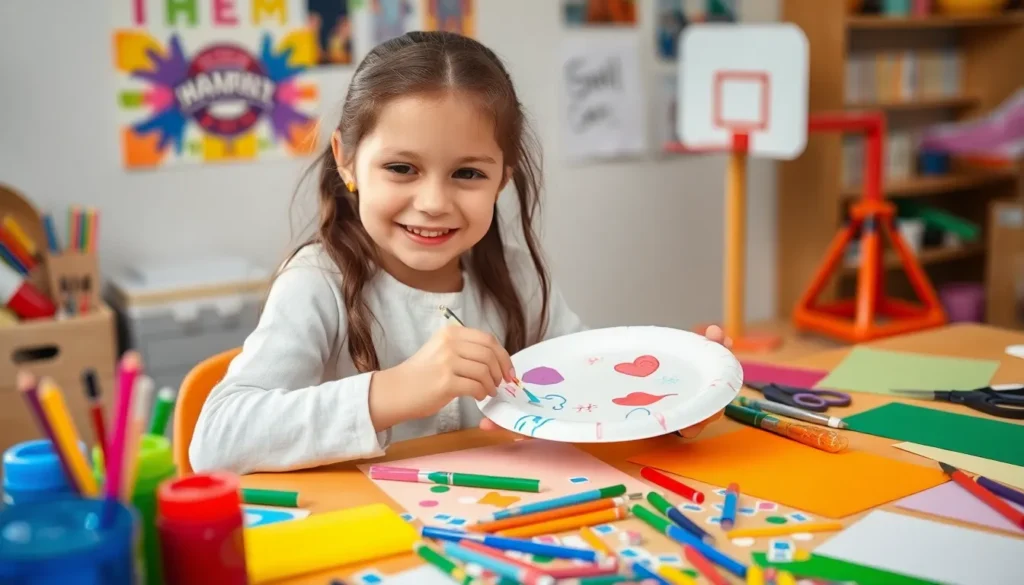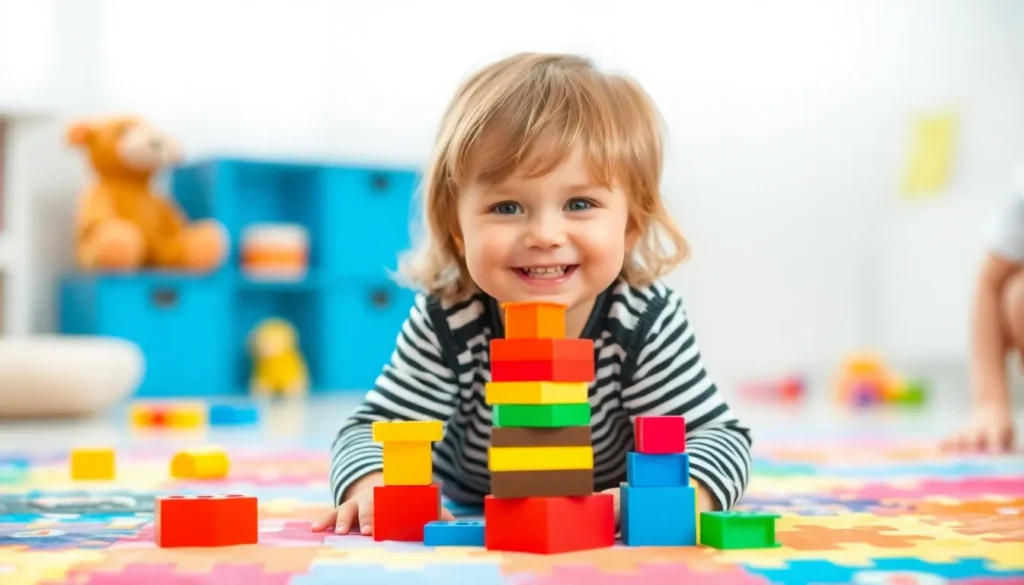When it comes to raising kids after a split, the debate between parallel parenting and co-parenting can feel like choosing between a cat and a dog—both have their perks, but they sure require different approaches. While co-parenting aims for teamwork and harmony, parallel parenting is more like a solo sport where each parent plays their own game, often in separate arenas.
Table of Contents
ToggleUnderstanding Parenting Styles
Parenting styles shape how separated parents raise their children. Each approach has unique characteristics and benefits, influencing children’s welfare and development.
What is Co-Parenting?
Co-parenting involves active collaboration between both parents to support their child’s needs. This approach emphasizes clear communication, shared responsibilities, and mutual respect. Parents often discuss schedules, decision-making, and key milestones together. They strive for consistency in rules and expectations, creating a harmonious environment for their child. Studies show that effective co-parenting leads to better emotional and behavioral outcomes for children, fostering their well-being.
What is Parallel Parenting?
Parallel parenting focuses on minimizing contact between parents while still addressing children’s needs. Each parent independently manages their time, resources, and rules without frequent interaction. This style suits high-conflict situations, allowing parents to avoid disputes that could negatively affect their child. Children benefit from having clear boundaries and routines in both households. Research indicates that parallel parenting reduces stress and enhances a child’s sense of security in challenging family dynamics.
Key Differences Between Parallel Parenting and Co-Parenting

Understanding the differences between parallel parenting and co-parenting highlights how each style impacts children after separation.
Communication Methods
Co-parenting relies on open dialogue between parents. Effective communication emphasizes collaboration and consistency in parenting decisions. Parents share schedules, discuss events, and align on rules. In parallel parenting, minimal communication is essential. Each parent focuses on their own household, avoiding conflict. Messages often revolve around logistics, such as pick-up times. This structured distance helps maintain peace, especially in high-conflict situations. Effective communication occurs primarily as needed, without extensive interaction.
Decision-Making Processes
Shared decision-making defines co-parenting. Parents jointly address important issues impacting their children. These decisions often pertain to education, healthcare, and extracurricular activities. Meanwhile, parallel parenting emphasizes individual authority. Each parent establishes rules and routines without needing the other’s input. Children experience distinct environments in each household. Independence in decision-making allows parents to focus on what works best for them and their children. In high-conflict scenarios, this autonomy reduces tension and fosters a sense of security.
Pros and Cons of Co-Parenting
Co-parenting involves collaboration between parents, which creates both advantages and disadvantages in raising children post-separation.
Advantages of Co-Parenting
Co-parenting fosters a stable environment that benefits children. This approach encourages consistent rules and routines, contributing to a child’s emotional security. Better communication exists between the parents, leading to shared responsibilities and decisions. Parents can effectively work together on school events, healthcare choices, and other significant matters. Children often thrive in this structured setting as they feel the support of both parents. When parents remain engaged in each other’s lives, it reinforces the idea that both are committed to their welfare.
Disadvantages of Co-Parenting
Co-parenting can be challenging, especially in high-conflict situations. Frequent communication may lead to misunderstandings or disagreements, creating additional stress for both parents. Emotional tension can increase, affecting the overall parenting dynamic and children’s well-being. Decision-making can become complicated when parents disagree on crucial issues, resulting in an inconsistent environment. Additionally, balancing two different parenting styles may confuse children, leading to divided loyalties. When one parent struggles to cooperate, maintaining a productive co-parenting relationship becomes even more difficult.
Pros and Cons of Parallel Parenting
Parallel parenting offers distinct benefits and drawbacks, particularly in high-conflict situations. It allows parents to develop their own routines while prioritizing their children’s needs.
Advantages of Parallel Parenting
Parallel parenting provides space for parents to operate independently. This structure reduces opportunities for conflict, leading to less emotional stress for both parents and children. Children benefit from clear boundaries, as each parent enforces their own rules. The arrangement fosters a sense of stability, as the child learns to navigate two sets of guidelines. Parents also avoid the pressure of having to communicate frequently, allowing them to focus on their individual parenting styles. Such autonomy can enhance a child’s adaptability and resilience in managing different environments.
Disadvantages of Parallel Parenting
Parallel parenting includes challenges that may affect children’s experiences. Limited communication between parents can lead to discrepancies in rules and routines, causing confusion. Children may struggle with inconsistent expectations if they transition between two different environments regularly. Emotional support can diminish, as minimal interaction might hinder opportunities for collaborative problem-solving. In some cases, the lack of communication may foster feelings of alienation for the child, as they perceive a divide between parents. Parents might also find decision-making more difficult, as they handle important issues without consulting one another, which can complicate care arrangements.
Choosing between parallel parenting and co-parenting depends on the unique circumstances surrounding each family. Parents must consider their relationship dynamics and the emotional needs of their children when deciding which approach to adopt.
While co-parenting promotes collaboration and stability, it may not be feasible in high-conflict situations. On the other hand, parallel parenting offers a way to minimize conflict and establish boundaries, though it can lead to inconsistencies in parenting practices.
Ultimately, the goal is to create a nurturing environment that supports children’s well-being and development. By understanding the strengths and limitations of each style, parents can make informed choices that best serve their family’s needs.









